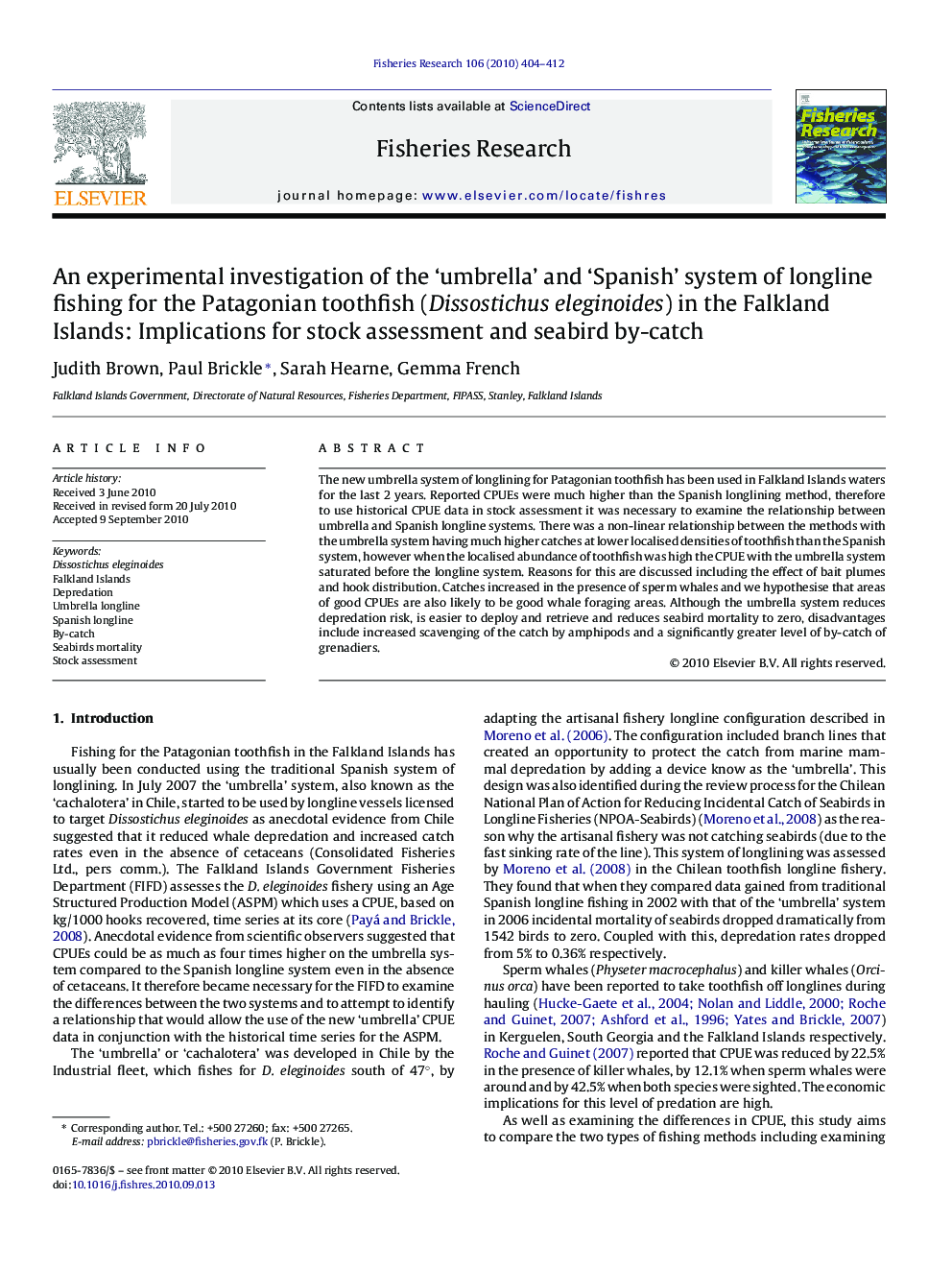| Article ID | Journal | Published Year | Pages | File Type |
|---|---|---|---|---|
| 4543960 | Fisheries Research | 2010 | 9 Pages |
Abstract
The new umbrella system of longlining for Patagonian toothfish has been used in Falkland Islands waters for the last 2 years. Reported CPUEs were much higher than the Spanish longlining method, therefore to use historical CPUE data in stock assessment it was necessary to examine the relationship between umbrella and Spanish longline systems. There was a non-linear relationship between the methods with the umbrella system having much higher catches at lower localised densities of toothfish than the Spanish system, however when the localised abundance of toothfish was high the CPUE with the umbrella system saturated before the longline system. Reasons for this are discussed including the effect of bait plumes and hook distribution. Catches increased in the presence of sperm whales and we hypothesise that areas of good CPUEs are also likely to be good whale foraging areas. Although the umbrella system reduces depredation risk, is easier to deploy and retrieve and reduces seabird mortality to zero, disadvantages include increased scavenging of the catch by amphipods and a significantly greater level of by-catch of grenadiers.
Related Topics
Life Sciences
Agricultural and Biological Sciences
Aquatic Science
Authors
Judith Brown, Paul Brickle, Sarah Hearne, Gemma French,
